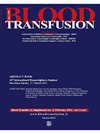
輸血是通過靜脈將血液或血液制品轉(zhuǎn)移到血液循環(huán)中的過程。輸血用于各種醫(yī)療條件,以替換血液中丟失的成分。早期輸血使用全血,但現(xiàn)代醫(yī)學(xué)實(shí)踐通常只使用血液成分,如紅細(xì)胞、白細(xì)胞、血漿、凝血因子和血小板。紅細(xì)胞含有血紅蛋白,通過提高體內(nèi)的氧含量來增加鐵的含量。輸血時(shí)不常用白細(xì)胞,但白細(xì)胞是免疫系統(tǒng)的一部分,可以抵抗感染。血漿是血液的液態(tài)部分,起到緩沖作用,含有蛋白質(zhì)和身體整體健康所需的重要物質(zhì)。血小板參與血液凝結(jié),防止身體出血。在這些成分被發(fā)現(xiàn)之前,醫(yī)生認(rèn)為血液是同質(zhì)的。因此,許多患者死于血液不相容的轉(zhuǎn)移。
Blood transfusion is the process of transferring blood or blood products into one's circulation intravenously. Transfusions are used for various medical conditions to replace lost components of the blood. Early transfusions used whole blood, but modern medical practice commonly uses only components of the blood, such as red blood cells, white blood cells, plasma, clotting factors, and platelets.Red blood cells contain hemoglobin, and increase iron levels by improving the amount of oxygen found in the body. White blood cells are not commonly used during transfusion, but are part of the immune system, and fight infections. Plasma is the liquid part of the blood, which acts as a buffer, and contains proteins and important substances needed for the body’s overall health. Platelets are involved in blood clotting, preventing the body from bleeding. Before these components were known, doctors believed that blood was homogenous. Because of this, many patients died due to the transfer of incompatible blood.
SCI熱門推薦期刊 >
SCI常見問題 >
職稱論文常見問題 >
EI常見問題 >